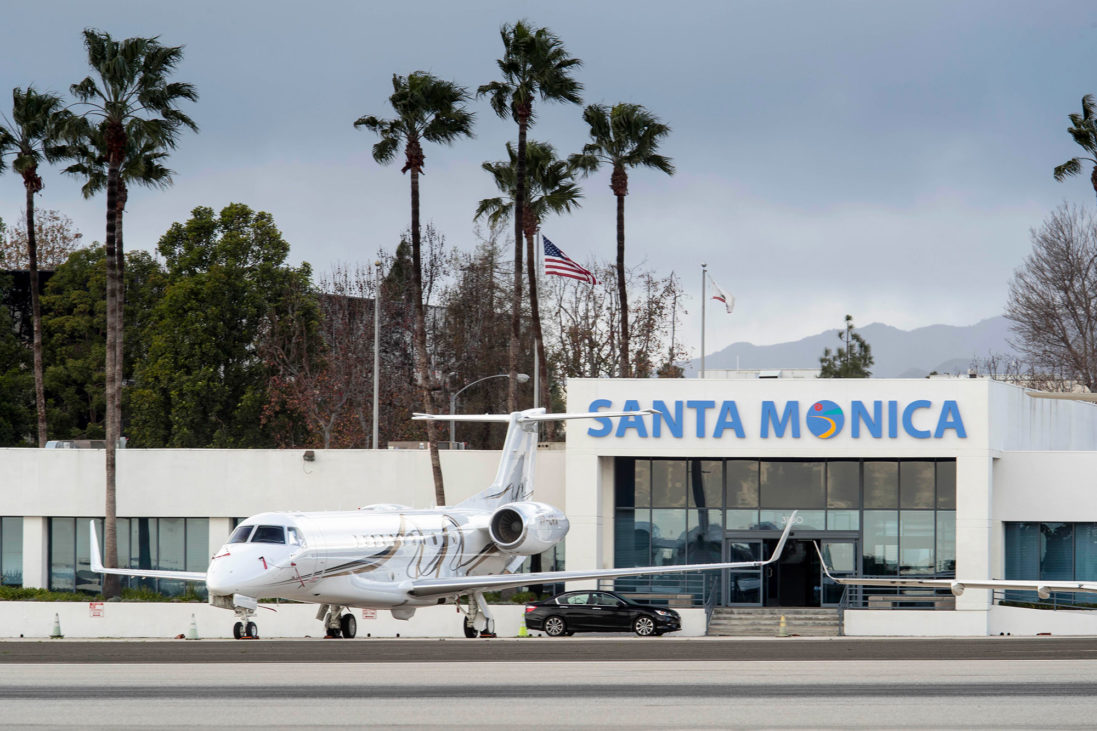
Nov. 7, 2018
NBAA is continuing efforts to preserve general aviation access to Santa Monica Municipal Airport (SMO), including a lawsuit asserting the FAA exceeded its authority when entering into a settlement agreement with the city of Santa Monica; an administrative complaint pending at the agency and an effort to stop new political measures that would degrade the airport’s safety and aeronautical capabilities.
In January 2017, the FAA and the city entered into a settlement agreement that requires the city to operate the airport only through 2028 and allowed the airport’s sole runway to be shortened from approximately 5,000 feet to 3,500 feet.
A coalition of airport stakeholders, led by NBAA, immediately challenged the controversial agreement before the U.S. Court of Appeals for the District of Columbia Circuit. The appeals court determined earlier this year the settlement agreement did not constitute a “final agency action” procedurally reviewable by that court; however, the court made no determination of the case’s merits.
Following those events, NBAA and others filed a complaint in the U.S. District Court for the District of Columbia, citing U.S. Supreme Court authority to the effect that the district court has jurisdiction to rule upon the propriety of the FAA’s action because the agency facially exceeded its normal powers, even if the FAA’s action was not considered to be procedurally “final.”
The FAA subsequently filed a motion to dismiss the new complaint; that motion, and opposition filed by NBAA in October 2018, are now awaiting decision by the district court, said NBAA Chief Operating Officer Steve Brown.
“We believe that we should prevail on the merits of this case,” he said. “We are concerned that a federal agency could be permitted to turn its back on protecting national aviation infrastructure and deviate from adhering to congressional statutes and have these actions be shielded from judicial review.”
Read the NBAA opposition to Motion to Dismiss.
Supporters Ask for Review of SMO Financial Practices
NBAA also has an administrative complaint pending at the FAA alleging the airport’s financial practices, including increases in leasing revenue – much of it from nonaeronautical sources – and high landing fees violate the city’s federal obligations.
“The city has created a major surplus as the result of recent increases in revenue and yet is continuing to charge unjustly high landing fees to aeronautical operators, which together constitute yet another impermissible access restriction,” Brown explained.
City’s Project Aims to Remove Safety Buffers
On Oct. 22, NBAA and the Aircraft Owners and Pilots Association (AOPA) sent a joint letter to the mayor and city council to stop the latest effort by city officials to degrade the airport’s safety and aeronautical capabilities by pursuing a proposal to remove pavement at each runway end. Those areas, comprising approximately 750′ each, were closed to aviation operations at the end of 2017 when the city reduced the available runway surface, but remain intact as a safety buffer for emergency use.
“Removing what the city refers to as “excess” pavement would be a complete waste of funds and have a negative impact on safety,” said Brown. “A paved surface offers the best alternative to bring an aircraft to a stop, should there be a runway excursion.”
Despite compromising important safety margins currently in place for aircraft occupants, and for those living near the airport, the city council subsequently voted to continue the pavement removal project and solicit new bids.
“This action makes it clear the city’s only intent is to further degrade the aeronautical capabilities, regardless of other ramifications, including safety, as the result of the fear that the airport would remain in aviation use well into the future,” Brown concluded. “NBAA will continue its efforts to preserve access to SMO and to advocate for its valuable role.”


 International Business Aviation Council Ltd.
International Business Aviation Council Ltd.